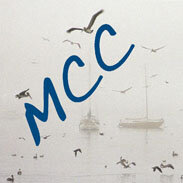Grasses, and the fragile wildflowers that live among them, create one of the most ecologically diverse habitats on the planet. Rancho Corral de Tierra’s precious remaining native grasslands are one of the things that make this place so special; however, some of these patches are in imminent danger of being lost to invasive weeds. NPS recently launched a three-year restoration project and needs your help.
 Grasses—and the fragile wildflowers that live among them—create one of the most ecologically diverse habitats on the planet! Deep root systems allow some individual perennial grasses to live for 100 years or more, surviving dry California summers to come back green and vibrant when the rains return.
Grasses—and the fragile wildflowers that live among them—create one of the most ecologically diverse habitats on the planet! Deep root systems allow some individual perennial grasses to live for 100 years or more, surviving dry California summers to come back green and vibrant when the rains return.
Sadly, less than one percent of California’s native grasslands remain. Their loss is largely due to development, invasive plants, and changes in fire and grazing patterns that have allowed larger woody plants to take over, and have pushed out many grassland-dependent mammals and nesting birds.
RESTORATION UNDERWAY
Rancho Corral de Tierra’s precious remaining native grasslands are one of the things that make this place so special; however, some of these patches are in imminent danger of being lost to invasive weeds like Harding and jubata grass, and to encroaching cypress and eucalyptus trees.
NPS recently launched a three-year project that aims to restore some of Rancho’s most hard-hit grassland areas. The hillsides in Montara will undergo a dramatic transformation as invasive grasses and trees are removed. The bare ground will be treated with rice straw to prevent erosion and keep weeds from resprouting. Once the weeds are under control, native grassland, wildflower, and wetland species will be replanted to recreate a more natural, beautiful, and diverse landscape.
JOIN THE TEAM
The National Park Service needs your help to make this project a success! The Park Stewardship Program works with community members and school groups to protect and restore ecologically sensitive park sites. If you would like to volunteer, or you would like more information about this project, please contact us at (415) 561-4967 or Susie_Bennett@nps.gov.
PROJECT SCHEDULE
2016
- Collect native plant seeds to be grown at a local nursery
- Remove Harding and jubata grass
- Mulch to manage weeds and erosion
2017
- Continue monitoring and maintaining areas where weeds were removed
- Grow additional native grassland species
- Remove select Monterey pines and eucalyptus trees closest to the restoration area
2018/2019
- Continue weed and erosion control
- Re-plant with native grassland plants using both seeds and seedlings
